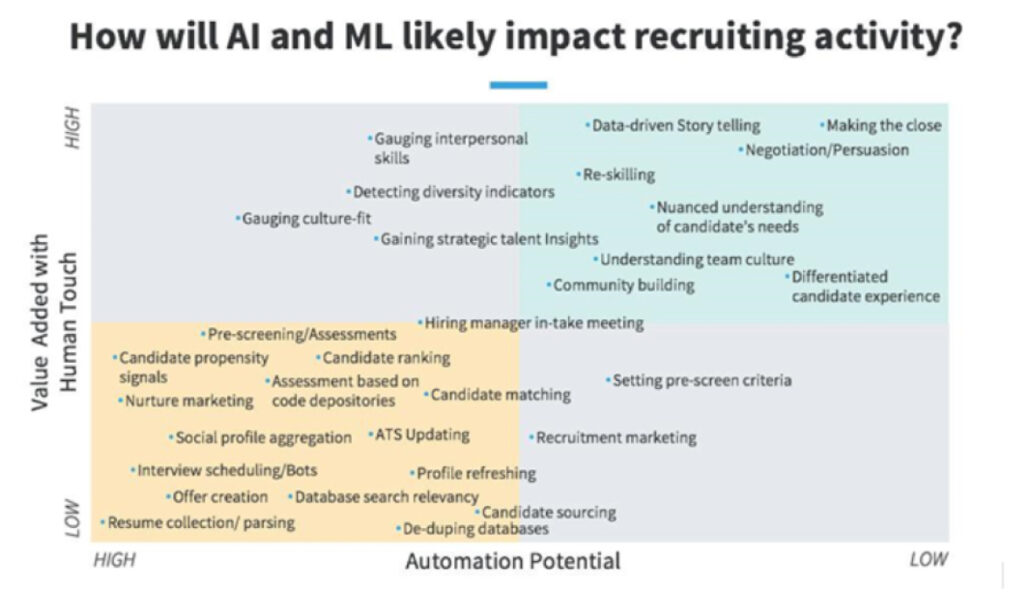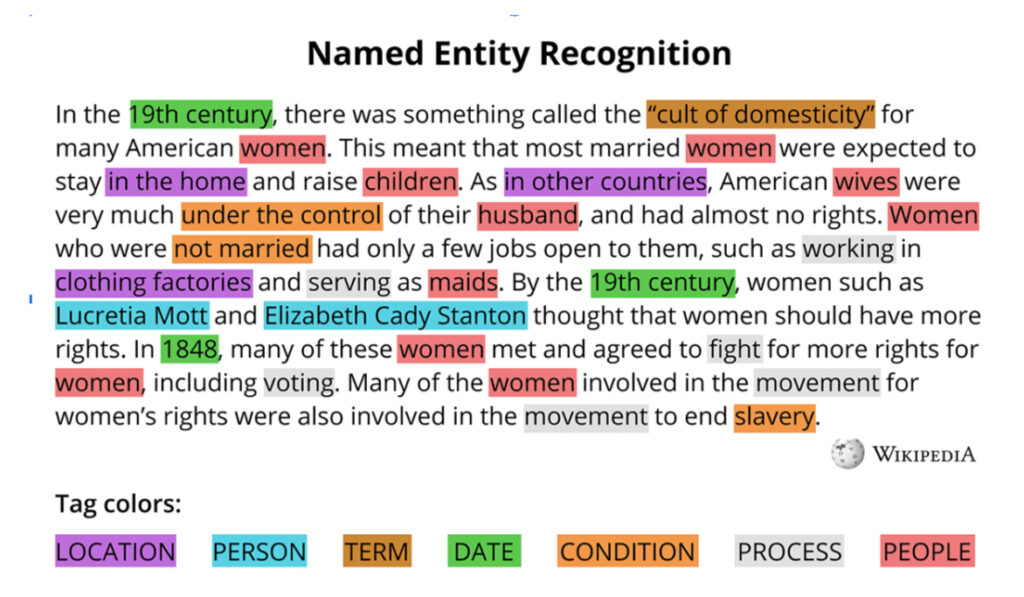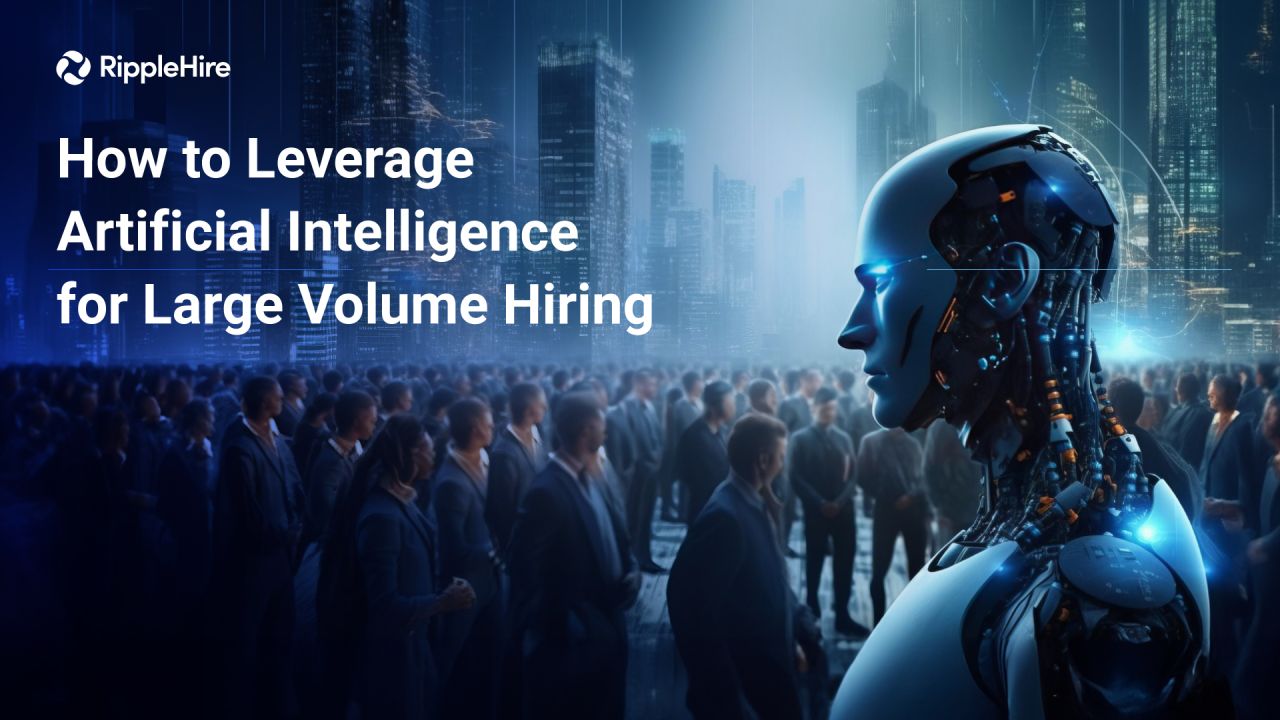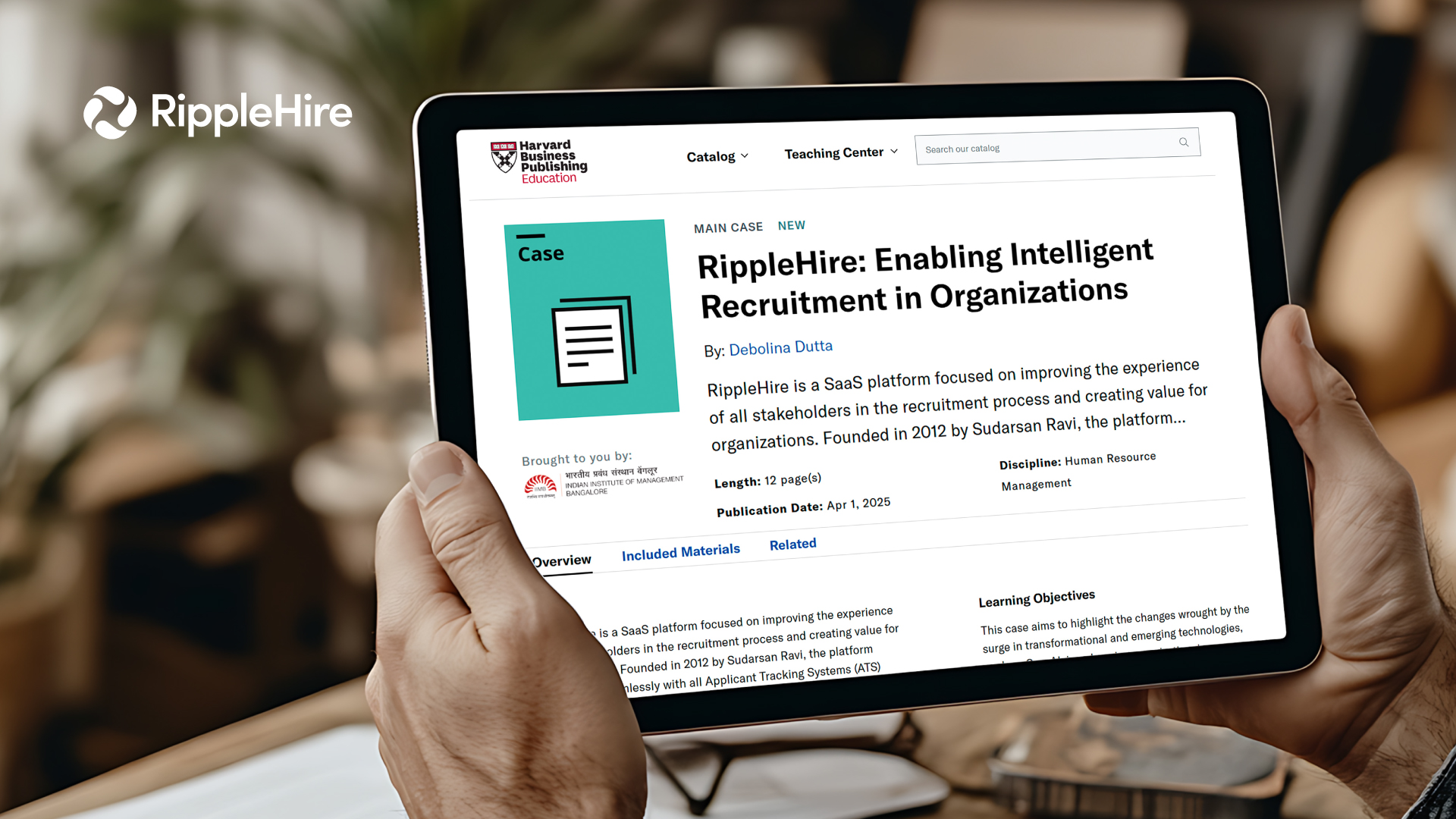The need to fill numerous positions swiftly without sacrificing quality can seem like an insurmountable challenge. But that’s where Artificial Intelligence (AI) steps in as a beacon of hope. This isn’t about the occasional vacancy; it’s about the high-stakes environment of large volume hiring, where every efficiency gain and insight can make a monumental difference.
AI brings to the table the ability to analyze vast amounts of data, spot the ideal candidates from a sea of applicants, and ensure that organizations not only fill positions quickly but also align new hires with their long-term vision and culture.
This blog will delve into how AI is revolutionizing the way companies approach large volume hiring, providing practical tips and forward-thinking strategies to harness AI’s potential for building a stronger, more cohesive team.
Challenges in large volume hiring
When relying on traditional methods for large volume hiring, companies often encounter a variety of challenges that can hinder their ability to efficiently and effectively fill multiple positions. These challenges include:
1) Time-Consuming Processes: Manual review of applications, scheduling interviews, and conducting initial screenings for a high number of candidates can be extremely time-consuming. This often leads to longer hiring cycles that can delay filling essential roles.
2) Quality of Hire: With the pressure to fill positions quickly, there’s a risk of compromising on the quality of hires. Traditional methods may not always allow for a thorough assessment of each candidate’s fit and potential, potentially leading to hires who may not meet the company’s needs or expectations in the long term.
3) Resource Allocation: Large volume hiring demands significant human resources and administrative effort. This can strain internal resources, diverting attention from other critical HR functions and strategic initiatives.
4) Consistency and Fairness: Ensuring consistency and fairness in evaluation becomes more challenging as the volume of candidates increases. Bias (unconscious or otherwise) and inconsistencies in the assessment process can lead to unequal opportunities and affect the diversity of the workforce.
5) Candidate Experience: Managing a large number of applications can make it difficult to provide a positive and engaging experience for each candidate. Poor communication and a lack of personalized interaction can deter top talent from pursuing opportunities with the company.
6) Scaling Challenges: Traditional hiring methods may not scale effectively with the company’s growth or the seasonal peaks in hiring demand. This can lead to inefficiencies and bottlenecks in the recruitment process.
How AI Transforms Large Volume Hiring
Artificial Intelligence (AI) is reshaping the landscape of large volume hiring by addressing the inefficiencies and limitations of traditional methods.

Here are four specific ways AI transforms this process, offering strategic advantages to organizations:
1. Automated Resume Screening
At the heart of automated resume screening is Natural Language Processing (NLP), a branch of AI that enables the understanding, interpretation, and manipulation of human language by machines. NLP allows the screening software to read and understand resumes much like a human would, but with far greater speed and consistency. It can interpret various formats, discern synonyms, and recognize the context in which skills and experiences are presented, ensuring a comprehensive understanding of each candidate’s qualifications.

Example of NLP, Source: https://media.mobidev.biz/2019/12/nlp-task-named-entity-recognition.png?strip=all&lossy=1&ssl=1
Machine learning, a subset of AI, enables the screening system to improve over time based on feedback and outcomes. As the system screens more resumes and receives input about the success of its selections (e.g., which candidates moved forward in the hiring process or performed well in their roles), it learns and adjusts its criteria for what makes a resume stand out. This continual learning process enhances the system’s accuracy, making it more adept at identifying the most promising candidates over time.
One of the key advantages of automated resume screening is its potential to reduce unconscious bias in the initial stages of the recruitment process. By focusing on the qualifications and experiences relevant to the job, AI screening tools can help create a more diverse candidate pool by minimizing the influence of factors unrelated to job performance. This objective approach to screening can support organizations in their efforts to promote diversity and inclusion within their workforce.
2. Enhanced Candidate Matching
AI technologies utilize advanced algorithms to match candidates with job vacancies more accurately. By analyzing data points across resumes and job descriptions, AI can identify patterns and preferences that may not be immediately apparent to human recruiters.
AI algorithms, particularly those powered by deep learning, go beyond simple keyword matching to understand the context and semantics behind the words in resumes and job descriptions. This means the AI can distinguish between the different meanings of a word in various contexts and identify skills and experiences that are relevant but may not be explicitly stated. For example, a candidate might not have listed a specific programming language but has experience with similar languages, suggesting a capability to learn and adapt.
One of the most powerful aspects of AI in candidate matching is its ability to learn and adapt over time. As the AI system is exposed to more hiring decisions, feedback, and performance data, it refines its understanding of what makes a successful hire for the company. This dynamic learning process means that the system becomes more effective with each hire, continually improving the quality of match between candidates and job vacancies.
3. Predictive Analytics for Candidate Success
AI leverages predictive analytics to forecast a candidate’s success in a role based on historical data, performance indicators, and behavioral patterns.
It involves collecting and analyzing vast amounts of data from various sources, including resumes, application forms, assessment results, interview feedback, and even social media profiles. It also considers data from current and past employees, such as their performance reviews, tenure, career progression, and reasons for leaving. By examining this data, AI models can identify patterns and correlations that may not be obvious to human recruiters.

Predictive analysis Source: https://semiconductor.samsung.com/support/tools-resources/dictionary/predictive-analytics/
Beyond just predicting job performance, predictive analytics can assess how well a candidate is likely to mesh with the company culture and their potential for long-term growth. This involves analyzing aspects of a candidate’s work history, extracurricular activities, and even the sentiment and language used in their application materials to gauge alignment with the company’s values and work environment. Predictive models can also forecast a candidate’s career trajectory based on their skills, experiences, and the success paths of similar profiles within the organization.
By forecasting a candidate’s performance and fit, organizations can make more informed hiring decisions, leading to a workforce that is more productive, engaged, and aligned with company goals.
4. Streamlining Communication and Engagement
AI-driven communication tools, such as chatbots and automated messaging platforms, enable organizations to maintain consistent, personalized interaction with candidates at scale.
These tools can provide timely updates, answer FAQs, and guide candidates through the application process, improving the overall candidate experience. This level of engagement ensures that candidates feel valued and informed, which is crucial for maintaining interest and commitment throughout the selection process.
By integrating AI into the hiring process, organizations can not only overcome the challenges of large volume hiring but also enhance the quality, efficiency, and fairness of their recruitment efforts, positioning themselves as employers of choice in a competitive talent market.
Best Practices for Leveraging AI in Large Volume Hiring
Leveraging AI in large volume hiring requires a thoughtful approach to ensure effectiveness, fairness, and a positive candidate experience. Here are five best practices for integrating AI into your recruitment process:
1. Define Clear Objectives and Success Metrics
Before implementing AI tools, it’s crucial to identify what you aim to achieve with this technology. Whether it’s reducing time-to-hire, improving the quality of candidates, or enhancing the candidate experience, having clear objectives will guide the selection and implementation of AI solutions. Alongside these objectives, establish success metrics to evaluate the impact of AI on your hiring process. This could include measures such as the reduction in screening time, improvement in candidate satisfaction scores, or the decrease in turnover rates for new hires.
2. Ensure Data Quality and Diversity
The effectiveness of AI in hiring is heavily dependent on the quality and diversity of the data it’s trained on. Biased or incomplete data sets can lead to skewed results, such as favoring certain demographics over others. To mitigate this, ensure your AI tools are trained on diverse and comprehensive data sets that accurately reflect the skills, experiences, and attributes of successful employees across different backgrounds. Regular audits of the data and algorithms can help identify and correct biases.
3. Prioritize Candidate Experience
AI should be used not just to streamline the hiring process for the organization but also to improve the experience for candidates. Transparent communication about the use of AI, providing feedback and updates through AI-powered platforms, and ensuring the application process is intuitive and accessible are all critical. The goal is to make candidates feel valued and fairly treated, regardless of the outcome of their application.
4. Combine AI with Human Judgment
While AI can significantly enhance the efficiency and effectiveness of the hiring process, it’s important to maintain a balance between automated decisions and human judgment. AI is excellent for handling repetitive tasks and processing large volumes of data, but human recruiters are better at interpreting nuances and making complex judgments, especially when it comes to cultural fit and potential. Use AI to narrow down the pool of candidates, but ensure final decisions involve a human touch.
Wrap up
AI systems are not set-and-forget tools; they require continuous monitoring and updating to remain effective and fair. This involves regularly reviewing the decisions made by AI tools, collecting feedback from candidates and hiring managers, and adjusting the algorithms based on outcomes and new data. Additionally, staying informed about advancements in AI and ethical considerations is crucial to keep your recruitment process at the forefront of innovation and compliance.






